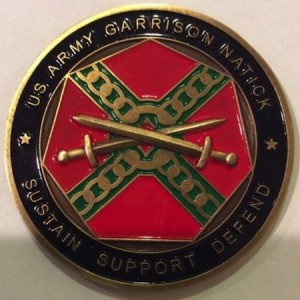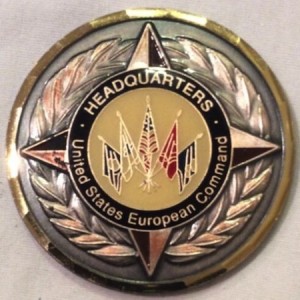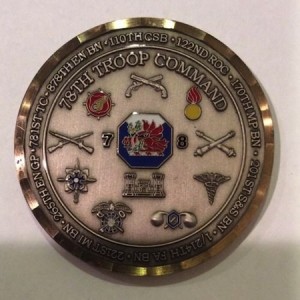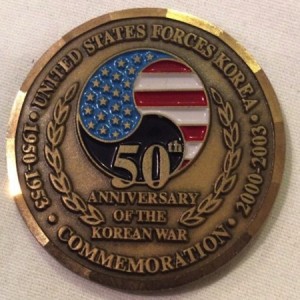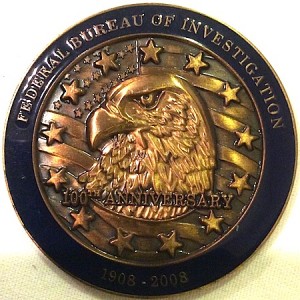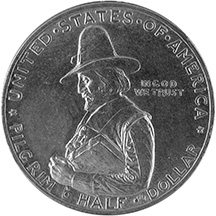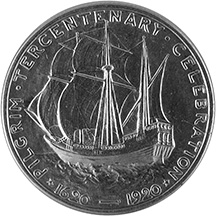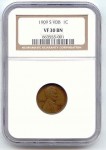Weekly World Numismatic News for January 31, 2021
 This past week’s numismatic-related news is a lesson about how the industry has not adapted to the new environment.
This past week’s numismatic-related news is a lesson about how the industry has not adapted to the new environment.
First, Whitman issues a statement with a headline saying, “Baltimore Expo Prohibited Due to Mandated COVID-19 Restrictions.” Their release rightly mentions that Maryland is using the Convention Center to help fight the pandemic in Baltimore. As the largest indoor location in the city, it would be right to assume that the Baltimore Convention Center might be busy for some time.
Whitman then announces a “MEGA Bourse” for the June Expo. Unfortunately, the Atlanta-based Whitman does not consider the factual data of the progress and what the Centers for Disease Control and Prevention, also located in Atlanta, says about the pandemic’s future. The pandemic will be a significant issue in June, just as it will be in August outside of Chicago. It would have been better for Whitman to say that they will monitor the situation and make an announcement when appropriate.
Collectors who have attended several smaller shows report that the dealers or the participants are not following COVID-19 protections. One person in Texas reported that “about half” of the dealers were not wearing masks. Although the infection and death levels have plateaued, the United States reached 26 million reported cases, and U.S deaths from COVID-19 topped 441,000, including my father. The number of cases and deaths tops every other country in the world.
I understand that there is pandemic fatigue. We want to go back to some semblance of a life. We collectors want to go to shows, have club meetings, and do more collecting. I know because I want that! But the more we screw around and do not take this seriously. More people will get sick and die.
Even with considering the administration’s goal of 100 million vaccines in 100 days, it will take another 180 days to get enough people vaccinated to reach herd immunity levels. Assuming that nothing goes wrong, it is a total of NINE months.
Based on the information provided, it means we can start to return to normalcy by September or October. It also assumes everyone cooperates.
COOPERATE! Damn it! I want to go to a coin show!
And now the news…
 → Read more at examinerlive.co.uk
→ Read more at examinerlive.co.uk
 → Read more at collectspace.com
→ Read more at collectspace.com
 → Read more at nydailynews.com
→ Read more at nydailynews.com
News from the U.S. Mint
A couple of quick news items that came out of the U.S. Mint on Tuesday.
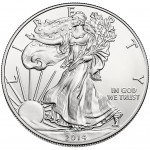 The U.S. Mint reported that as of December 8, 2014, they had sold a record 42,864,000 one troy ounce American Silver Eagle Bullion coins for all of 2014. This beats the previous record of 42,675,000 coins sold in 2013. Sales of the 2014 bullion coins to authorized dealers will end during the week of December 15.
The U.S. Mint reported that as of December 8, 2014, they had sold a record 42,864,000 one troy ounce American Silver Eagle Bullion coins for all of 2014. This beats the previous record of 42,675,000 coins sold in 2013. Sales of the 2014 bullion coins to authorized dealers will end during the week of December 15.
Taking a sample of five different bullion dealers, the average price is around $20 for one American Silver Eagle Bullion coin. If each coin is worth about $20 each, that means the U.S. Mint sold $857.28 million in silver bullion for 2014. Remember, this is for the bullion coin. This does not count the collectible versions such as the proof or the West Point struck uncirculated coin.
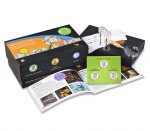 The other announcement was that the U.S. Mint will sell a new product, Coin Discovery Set — An Introduction to Coin Collecting. The set costing $24.95 will include three 2014 Kennedy Half-Dollars in three different finishes—proof, uncirculated and circulating. It will also include two coin tubes for quarters, a magnifying glass, cotton gloves, and a booklet that explains the coin production process. The box will the the size to store U.S. Mint proof sets.
The other announcement was that the U.S. Mint will sell a new product, Coin Discovery Set — An Introduction to Coin Collecting. The set costing $24.95 will include three 2014 Kennedy Half-Dollars in three different finishes—proof, uncirculated and circulating. It will also include two coin tubes for quarters, a magnifying glass, cotton gloves, and a booklet that explains the coin production process. The box will the the size to store U.S. Mint proof sets.
Sales will open at noon Eastern Standard Time (1600 UTC) on Tuesday December 16, 2014. While there will be no household ordering limit, the U.S. Mint has set a product limit to 45,000 sets.
Challenging to following up
I know it has been a while since I wrote a substantive post. But as the holiday season is upon us, business has picked up and I am doing a lot of buying and selling. While good for business, it has not provided me time to write. I have a backlog that I will get to, so please be patient.
Of the items I am buying and selling are Challenge Coins. While not coins in the strictest sense of the term challenge coins are the size of large dollar coins or crowns issued, usually issued by a military organization and given to someone as a sign of appreciation. Back in 2009, I wrote about NBC news anchor Brian Williams admitting that he collected challenge coins.
Although given in appreciation, not everyone appreciates their significance and, in some cases, their beauty. Aside from finding them in estate sales, they are included in large lots of items I purchase while looking for other items. For some reason, the sellers throw them into the lot thinking that they are not worth much.
For the most part, challenge coins do not have value the way coins have value. Most challenge coins are enameled bronze disks. What makes them interesting is the topic, the location depicted, or who issued the coin. Some challenge coins are very basic while others have artistic value that rivals anything issued by government mints.
Although I have handled hundreds of challenge coins in the last year, two stand out as exception. Unfortunately, I was so excited to have found them that I sold them to new owners before taking pictures. One was a coin that was overlaid on a large “V” which was to be the Roman numeral for five. It was very striking. The other was a coin that was three-inches wide by one-inch tall in the shape of a dog bone. This very unique challenge coin was issued for an anniversary of the police canine unit of Amtrak in Chicago. Aside from various insignias and images of the five types of dogs that Amtrak Police Canine Unit trains, the coin included representative flags including one for the City of Chicago.
Here are some challenge coins that I have recently sold:
Rear Admiral Charles S. Abbot (ret.) was Deputy Commander in Chief of USEUCOM from 1998 to 2000.
“Georgia’s 911 Force”
Finally, if you want to start your own challenge coins collection, here are a few I have for sale for you to start:
Happy Thanksgiving 2014
Thanksgiving in the United States is usually traced back to the Pilgrims celebration of their first successful harvest in 1621. The three-day event was attended by 53 Pilgrims and 90 Native Americans that lasted three days. The tradition of giving thanks for successes was a tradition that the Pilgrims brought with them from England. This three-day celebration in 1621 is considered the first Thanksgiving.
Although there is no record of the menu, it is likely that the meal consisted of food from the harvest, venison, and Indian corn. The local natives killed five deer as gifts for the celebration. Given the abundance of seafood nearby, it is likely some made it to the celebration as well.
Thanksgiving was celebrated during many different times within the colonies, mainly to give thanks for something that was honorable to the colony or the locality that observed the celebration. The first national recognition of a Thanksgiving celebration came when General George Washington declared December 1777 as Thanksgiving honoring the defeat of the British at Saratoga. As President, George Washington declared the first national Thanksgiving celebration on November 26, 1789. The only other president to issue a Thanksgiving proclamation was President James Madison. From then, it was up to the individual states to declare a Thanksgiving holiday.
After reading a diary from the time of the Pilgrims, writer and editor Sarah Josepha Hale wrote editorials campaigning to bring back the Thanksgiving celebration. As part of her efforts Hale developed recipes for roasted turkey, pumpkin pie, and stuffing that are part of the inspiration for today’s Thanksgiving feast.
Hale’s message made it to the White House where it was embraced by President Abraham Lincoln. As part of his attempt to maintain the union, President Lincoln issued a proclamation that made Thanksgiving Day a national annual event on the last Thursday in November beginning in 1863.
You might not have heard of Hale but you might know one of her most famous poems. In 1830, Hale published Poems for our Children that included one originally titled “Mary’s Lamb.” Today, it is more commonly known as “Mary Had a Little Lamb.”
Thanksgiving remained the last Thursday of November until 1939 when he declared Thanksgiving to be on the fourth Thursday of the month to give merchants more time to sell good during the Christmas shopping season. Congress passed a joint resolution in 1942 fixing Thanksgiving to the fourth Thursday of November.
In 1947, the National Turkey Federation has provided the President of the United State with one live turkey and two dressed turkeys. President Harry Truman is credited with pardoning the first turkey in 1947 but it did not become a tradition until President Ronald Reagan started in 1987 and continued by President George H.W. Bush in 1989. Since 1989, the pardoned turkeys have lived the rest of their lives at Frying Pan Park in Herndon, Virginia.
An auction hunter’s lesson
 Over the weekend I attended an estate auction that included coins for sale. While my new business venture concentrates on all vintage collectibles, I am still a collector and continue to look for those interesting items and the good coins to add to my collection. As I was looking over the lots I noticed one had several blue folders of Lincoln cents. The collector in me could not resist and I picked up the folders and started looking.
Over the weekend I attended an estate auction that included coins for sale. While my new business venture concentrates on all vintage collectibles, I am still a collector and continue to look for those interesting items and the good coins to add to my collection. As I was looking over the lots I noticed one had several blue folders of Lincoln cents. The collector in me could not resist and I picked up the folders and started looking.
Every hold was filled.
What drew my eye first was the hole marked “1909-S VDB.” Even though the 1914-D may be worth more, the 1909-S VDB is considered the Holy Grail amongst change hunters. With only 484,000 struck the odds of finding one are not in a change hunter’s favor. But we keep looking and hoping.
After reaching into my pocket for my ever present loupe, I asked the attendant if I could remove the coin to see the reverse. I had to check for those three letters on the back because it did say it was a 1909-S on the front. With the attendant watching me, I removed the coin from the slot, turned it over and brought it up to my loupe.
Using a 16X loupe I zeroed in on the area where I could find the “V.D.B” only to find something unexpected. On this coin, the “VDB” with no periods were punched into the coin. Holding the coin and turning it in the light to see how the light reacts, it was easy to see that the coin was not real.
Being very disappointed I quietly told the attendant that the coin was altered. She did not know what to do. When I suggested she tell her boss, she took the coin from me and went into a back room. A moment later, she returned and asked me to follow her to the office.
While the owner of the auction house was a bit upset, we talked to establish who I was and how I was qualified to judge the authenticity. After asking him to bring up my blog and showing him that I own a real 1909-S VDB, I told him how I know that the coin was altered. I handed him my loupe and told him to look at the letters. When he saw that the letters were punched into the coin instead of being in relief, he became upset again, but not at me.I understand how he felt. In the auction business, they earn money from the buyer and seller fees. If the item sells for a high price, the auction house makes more money. In this case, since the coin was a solid VF, it could have sold for $700-800 alone.
Before he became too angry, I asked to see the 1914-D. At VF that coin is about $400 in the retail market. When I looked carefully I could see that the mintmark was added to the coin. It was not a very good job when you see it under magnification but looked all right on first glance. I showed the auctioneer how I know it had the mintmark added. He agreed with my assessment.
He asked if there were any more important dates that he should know about. I zeroed in on the hole for the 1922-D that had “No D” written in pen under the date. Even before finding the date under the loupe I could tell the coin was whizzed. That is a bad sign to begin with but if the coin was real, it would diminish its value but not make it worthless. What made it worthless was that you can tell someone filed the mintmark off the coin. Whoever did the filing did not do a good job because it made a little hole where the mintmark should be. This coin doctor probably whizzed the coin in order to cover up the alterations.
To say I gave this gentleman a shock would be an understatement. He shook my hand and offered me a discount on the buyer’s fee for helping him. After leaving his office he had the attendant who helped me remove all of the blue binders from the auction. When I spoke with the attendant later, she said they were all from the same consignor and that he was going to return them as being unsalable.
This was not the first time I attended an auction at this place and it will not be my last. Aside from being able to purchase good inventory for my business, they have proven to me they have integrity. Knowing this helps me buy with confidence.
I tell this story to provide two lessons. First, always examine the items before you bid. Even for online auctions, examine the pictures and read any descriptions carefully. If you are afraid to buy ungraded coins, then buy only graded coins. But make sure you are fully aware of what is being sold. Do not be afraid of asking the seller a question or even asking for a better picture. If the seller cannot help you then do not buy from that seller.

Buy the book before buying the coin!
My second lesson is to know who you are buying from. This is more difficult online but you do have to take the feedback seriously. Again, if you have any questions you should ask. Every site has a way to contact the seller in order for you to ask questions. If the seller is not cooperative, let that be a sign for you.
When working with auction houses, it takes a little longer to establish a relationship. But you need to introduce yourself, talk with people and ask questions. Make yourself known and show that you are a serious buyer. It may take a few auctions to establish a relationship, but be persistent. Aside from preferential treatment and discounted seller fees, someone with a relationship can be told bout unpublished items in advance so that you are prepared to buy quicker than someone off the street. Another advantage is that if you specialize in something that the auction house cannot sell, you can buy it as a good price. As a reseller, I find that very good for business.
Even though online auctions are very popular, there is nothing better than being there live. I highly recommend the experience.
No Internet sales tax for you
 Although the numismatics industry generates millions of dollars per year, it is dominated by small businesses. You can see this by going to any show and with the exception of the major auction and bullion companies, the vast majority of the dealers you see on the bourse floor are small businesses. Numismatics may be one of the few national industries that you can meet the owner just by walking up to their table at a show.
Although the numismatics industry generates millions of dollars per year, it is dominated by small businesses. You can see this by going to any show and with the exception of the major auction and bullion companies, the vast majority of the dealers you see on the bourse floor are small businesses. Numismatics may be one of the few national industries that you can meet the owner just by walking up to their table at a show.
Numismatics is not alone as being dominated by small businesses but it is the only industry that generates notice because of the prices for its high end merchandise. Face it, some people cannot comprehend how someone can pay over $10 million for a one dollar coin. Forget the fact that the coin may be amongst the first dollars produced by the U.S. Mint, it is still just a one dollar coin.
We keep hearing that small businesses are the backbone of the economy and that Main Street does not function without small businesses. Small businesses have been using the modern equivalence of mail order in order to expand beyond Main Street to reach customers where ever they are. In the spirit of Aaron Montgomery Ward and Richard Warren Sears whose mail order catalog businesses are the legends of business history, modern entrepreneurs have been leveraged the Internet to sell goods and services to a worldwide public.
Even though the small business is the backbone of the economy, their existence is constantly under attack. Aside from over regulation and complicated tax requirements, states want these small businesses to now collect sales taxes from the customers in the states that require sales taxes. This is not limited to sales by catalogs and the telephone. Sales made using the Internet would be subject to the customer’s sales tax.
In other words, as a small business owner in Maryland but I sell a coin to someone in Virginia I would have to collect the sales tax for the Commonwealth of Virginia. The same would be true if I sell a coin to someone in the District of Columbia or the State of New Jersey. However, if I sell the same coin to someone in Delaware I would not have to collect sales taxes since it is not required by Delaware.
This also does not count the states that collect sales taxes for the sale of coins but not the sale of bullion or for coins over a certain threshold. A small business now has to add additional resources to comply with the laws of all 50 states even though they are present in only one.
The Senate passed the Marketplace Fairness Act (S. 734) with objection from the senators representing states that do not have sales tax laws. In the House, Judiciary Committee Chairman Bob Goodlatte (R-VA) has been a vocal critic of the bill. Goodlatte has said that the bill is written too broadly and could damage online commerce.
Although the bill was called the Internet sales tax bill, the bill was written in such a way to require all interstate sales to be subject to the collection of sales taxes. Collecting of sales tax would include everything from services to advice as well as digital downloads including music, smartphone apps, and streaming music services.
On Monday, all small businesses breathed a sigh of relief when a spokesman for Speaker of the House John Boehner (R-OH) said:
The speaker has made clear in the past he has significant concerns about the bill, and it won’t move forward this year. The Judiciary Committee continues to examine the measure and the broader issue. In the meantime, the House and Senate should work together to extend the moratorium on internet taxation without further delay.
This does not mean the Senate has given up. Sen. Mike Enzi (R-WY) has attached the wording of the Marketplace Fairness Act to a bill that passed the House to extend a moratorium on taxing Internet access. Although this has some support from Sen. Orin Hatch (R-UT), ranking member on the Senate Finance Committee, Chairman Ron Wyden (D-OR) is against the bill since Oregon is one of the states that does not have sales tax laws.
With the Democrats facing the loss of control of the Senate in January, it may be unlikely that the Democratic chairman of a committee would give a Republican something he wants during a lame duck session. Wyden will block the measure and work with Majority Leader Harry Reid (D-NV) to promote their agenda before they lose control.
But for now, you can order coins from your favorite out of state dealer or even from your favorite auction website without having to worry about having to add sales tax to your purchase.

